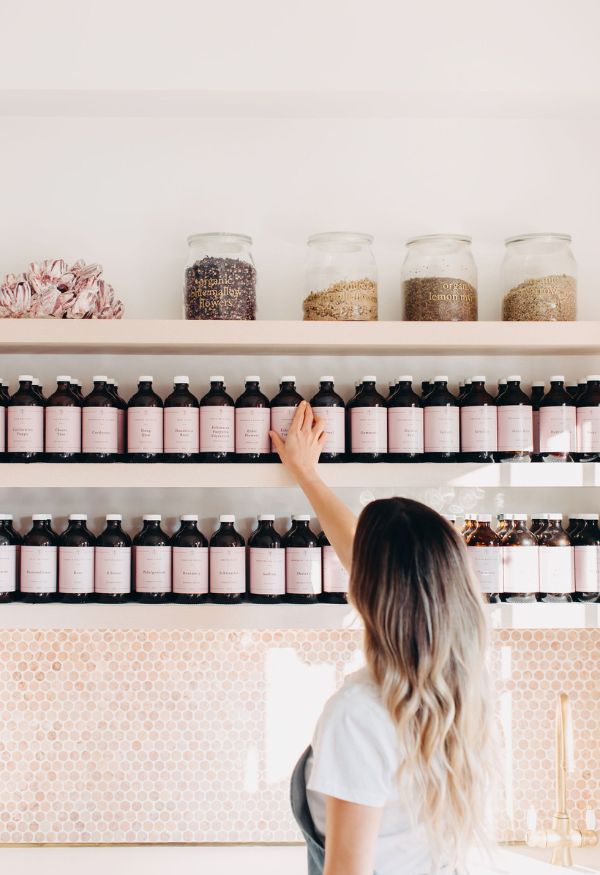Our team will be taking a very well-deserved break over the Christmas and New Year period. Be sure to pop in and collect your remedies before we close at 1 pm on Wednesday, 24th December, to ensure you have enough until we reopen our doors at 9 am on Friday, 2nd January in the new year.
Our team will be taking a very well-deserved break over the Christmas and New Year period. Be sure to pop in and collect your remedies before we close at 1 pm on Wednesday, 24th December, to ensure you have enough until we reopen our doors at 9 am on Friday, 2nd January in the new year.
What a Healthy Period Looks Like | with Natalie Pickering
September 26, 2022 3 min read
Have you ever wondered what your menstrual flow can tell you about your hormones and your health in general?

As young women we receive very little education and instruction around our periods it's sadly lacking. We seem to be still stuck in the dark ages of treating these discussions as taboo and unpleasant.
The instruction we do receive tends to suggest that a period is meant to be suffered through, that it's a woman’s cross to bear.
Seriously? It is 2022, and I'm here to say this is not the case.
The problem that this outdated attitude creates is a disempowerment and lack of awareness and knowledge about an intrinsic part of our feminine wellness. It leaves women feeling stuck with nowhere to look for answers and strategies to improve their experience of their cycle and flow.
Without open, frank and honest discussion about menstrual cycles, menstrual flow and menstrual symptoms - many women young and old are stuck with miserable, painful and incredibly difficult periods, which is completely unnecessary.
Let's break open the vault and talk openly about the menstrual flow (aka your period), not the withdrawal bleed experienced while on the contraceptive pill as this is not a true period.
Your menstrual flow can provide multiple answers to your hormone balance, your cyclical symptoms like PMS and mid-cycle symptoms, and even your nutrient levels!
A deep and complete understanding of your hormones and your cycle can help you unleash your feminine superpowers so that you feel and perform at your best.
Essentially your menstrual flow should start with no more than a half day of spotting, the majority of your flow should be a fresh cranberry red colour with very few clots no larger than a pea, and it should flow freely with a viscosity similar to olive oil - not thick and gluggy but also not watery.
The amount of flow you should lose each month is between 60 and 70 ml with an average range of 35 - 50ml. Note, this flow is not 100% blood, it will also contain mucus and tissues.
Each soaked pad or tampon holds roughly 5ml or 1 teaspoon of flow, this varies a little with different brands. If you're using a menstrual cup, they will hold 25-30ml when full.
For a 'normal' flow you would use 6-10 pads or tampons each cycle, or you may empty a ½ - ¾ full cup once daily for 3-4 days.
Troubleshooting Your Menstrual Flow
If your flow is heavier than 60-80 ml each month it could indicate:
- Oestrogen excess
- Low progesterone
- Endometriosis
- PCOS
- Fibroids/polyps
- Adenomyosis
- Iron deficiency
- Thyroid disease
- Clotting disorders
- Anovulatory cycle
- IUD present
If your flow is less than 25ml each month it could indicate:
- Low oestrogen,
- Anovulatory cycle,
- Poor uterine circulation
- PCOS
If you experience more than 3 clots larger than 5 cents it could indicate:
- Low progesterone
- Perimenopause
- Endometriosis
- Fibroids
- Adenomyosis
- Low iron
If you have spotting for more than 12 hours before your period begins it could indicate:
- Low progesterone
- Underactive thyroid
- Endometriosis
- Uterine polyps or fibroids
- Implantation bleed
- Miscarriage
- Rarely - uterine or endometrial cancer

Something Not Quite "Normal"?
If your flow is different than the normal colour and amount you may well be dealing with other symptoms as well. The most common causes are hormone imbalances or nutrient deficiencies. There may be more complex issues such as endometriosis, adenomyosis or PCOS which often have more complex causes and treatments.
Do you want to enjoy healthy, easy and uneventful periods, as well as every other day of the month book a consult with Natalie here, and together we'll interpret the signs your body is giving you and learn everything you need to know about a health menstrual cycle.
Love Natalie
Naturopath, Natalie Pickering, has been nurturing, guiding and supporting women to overcome their health challenges for well over two decades.
Also in Journal

Why Consider Stool Testing For Children? | with Michele Grosvenor
December 08, 2025 3 min read
Read Morejoin the family
Receive exclusive wellness content curated just for you, delivered straight to your inbox. Get the latest insights from the Floralia team of experts and be the first to know about product launches, programs, research, treatment offers, and VIP events.

Festive Season Online Orders.
Our team are taking a well-deserved break over the festive season until January 2nd.
Any online orders placed between December 24th and January 1st will be lovingly prepared and dispatched as soon as possible once our team returns. Please allow an extra day or so for us to get your remedies and supplements. We appreciate your patience and understanding, and wish you a beautiful and restful holiday season.
If you have any questions, reach out to us via email at hello@floraliawellness.com.au, and we’ll respond to you in the new year.


